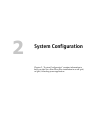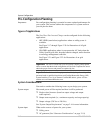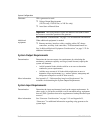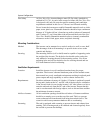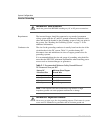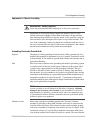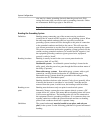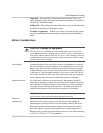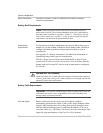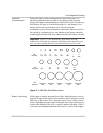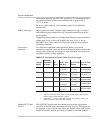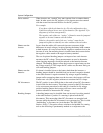
Pre-Configuration Planning
976-0043-01-02 2–9
Equipment or Chassis Grounding
Equipment or chassis grounding connects the metallic chassis of the
various enclosures together to have them at the same voltage potential,
thus reducing the possibility for electric shock. It also provides a path for
fault currents to flow through to blow fuses or trip circuit breakers. The
size of the connecting conductors should be coordinated with the size of
the over-current devices involved. Under some circumstances, the conduit
and enclosures themselves will provide the current paths.
Grounding Electrodes/Ground Rods
Purpose The purpose of the grounding electrode (often called a ground rod) is to
maintain the potential of equipment tie to it at “ground” potential to avoid
a shock hazard. It also shunts to ground fault currents and currents due to
ground tied filtering.
Size The size for the conductor to the grounding electrode or grounding system
is usually based on the size of the largest conductor in the system. Most
systems use a copper-plated rod as the grounding electrode. The rod
should be 5/8 inch (16 mm) round by 8 feet (2 meters) long and driven
into the earth. It is also common to use copper wire placed in the concrete
foundation of the building as a grounding system. Either method may be
acceptable, but the local code will prevail. Connection to the ground
electrode should be done with special clamps located above ground where
they can be periodically inspected.
Number of rods Many large systems use multiple ground rods. The most common
example is providing a direct path from the solar array to earth near the
location of the solar array. Most electrical codes expect multiple ground
rods to be connected by a separate wire with its own set of clamps. If this
connection is done, it is a good idea to make the connection with a bare
wire located outside of the conduit (if used) in a trench. The run of buried
WARNING: Shock Hazard
Attach the ground lead BEFORE attaching AC or DC power connections.
Note:
This inverter, along with all other power electronic devices in your
system, are subject to severe damage from the effects of lightning. Lightning
damage is not covered by your warranty. If your installation is in an area of
high probability for lightning, you should consult with a local lightning expert
or your authorized Xantrex installer to determine what extra precautions should
be taken to protect your equipment.



